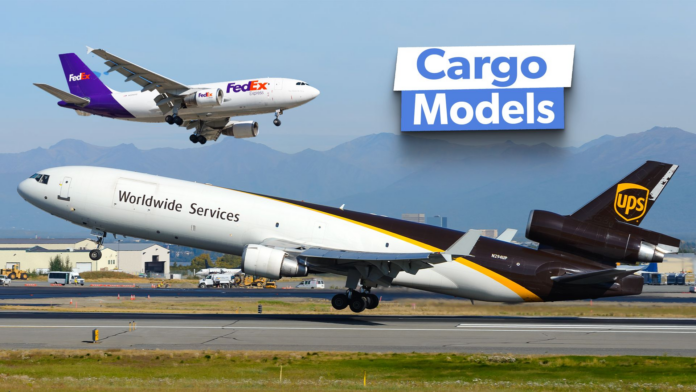Despite what one may be led to believe, not all cargo airlines in the United States operate with the same business model and there are dozens of different ways in which carriers transfer freight from point A to point B. Intuitively, one might be led to expect that cargo airlines operate similarly to commercial passenger airlines, and there are many similarities between their operations.
Get all the latest aviation news from Simple Flying!
Nonetheless, there are numerous intricacies to their pricing models, route networks, fleets, and operational habits that strongly differentiate some types of carriers from others.
For starters, dedicated cargo airlines like FedEx, which maintains one of the world’s largest fleets of cargo aircraft, operate differently from Delta Air Lines Cargo.
Close
For this example, it is relatively easy to understand where Delta and FedEx differ from a cargo perspective, as one operates a large-scale cargo-only network while the other transports cargo in the holds of passenger airliners.
Let’s take a deeper look at some of the unique differences between cargo airline operational models.
Related A Historical Look At The FedEx Fleet Over The Years The express package mega-carrier started from very humble beginnings over half a century ago.
Cargo giants operate scheduled overnight models that funnel through mega hubs
Traditionally, the world’s largest cargo airline operators have an overnight hub-and-spoke business model, one which is used by UPS Airlines and FedEx, the world’s two largest cargo airlines (as well as the two largest in the United States) by revenue, according to Statista.
These airline business models involve having dozens of destinations across the United States and the globe and funneling all traffic through giant mega-hubs.
Close
While commercial passenger airlines like Delta will transfer packages through a handful of hubs spread across the United States, carriers like UPS and FedEx will operate out of typically just one giant hub.
We can see just how extensive the operations are for both FedEx and UPS from their principal hubs in the table below:
Airline: Principal hub: Number of destinations served: FedEx Express Memphis International Airport (MEM) 197 UPS Airlines Louisville Muhammad Ali International Airport (SDF) 93
The scale of these airlines’ operations is truly extensive at these relatively small facilities, with hundreds of destinations served from airports that may only see a handful of passenger flights. The image below demonstrates the size of UPS’s massive Worldport facility in Louisville.
Operations take place mostly overnight at these airports
For the most part, cargo operations at massive logistics hubs like Memphis and Louisville take place overnight, as carriers conveniently schedule their flights to provide overnight delivery capabilities anywhere within the United States.
Airlines like UPS and FedEx will schedule almost all of their flights from around the country to arrive in Louisville or Memphis in the middle of the night when packages will be transferred between aircraft.
Then, carriers will turn their planes around and fly them back to their destinations during the day, which is why it is fairly common to see a couple of FedEx or UPS aircraft sitting around on the tarmac all day long before they fly at night to their respective hubs.
Some longer-distance routes, such as those flown by UPS across the Atlantic or Pacific to its hubs in Europe and Asia, will violate this typical operational pattern, but for the most part, this is how cargo airlines work.
Photo: Markus Mainka | Shutterstock
This requires airlines to leave their aircraft around for most of the day, which often encourages them to adopt older, less fuel-efficient fleets for which a lack of aircraft utilization does not create a major issue.
Furthermore, it allows these companies to transport a package from anywhere in the United States to any other destination in the United States overnight, allowing for seamlessly efficient cargo transportation.
Economists believe there are two major types of hybrid cargo-passenger airlines
Several analyzes by quantitative economists have identified two major types of methodologies used by commercial airlines to augment their passenger fare revenue by operating cargo services.
The less profitable of these two types are airlines that use additional capacity in their cargo holds to provide occasional cargo services for private customers.
Photo: Iberia
According to Kevin Cullinane’s 2019 book Airline Economics in Europe, these airlines tend to use cargo services to offset lower capacity which helps drive margins up and allows these carriers to be relatively flexible.
Cullinane dubs this kind of cargo airline a



